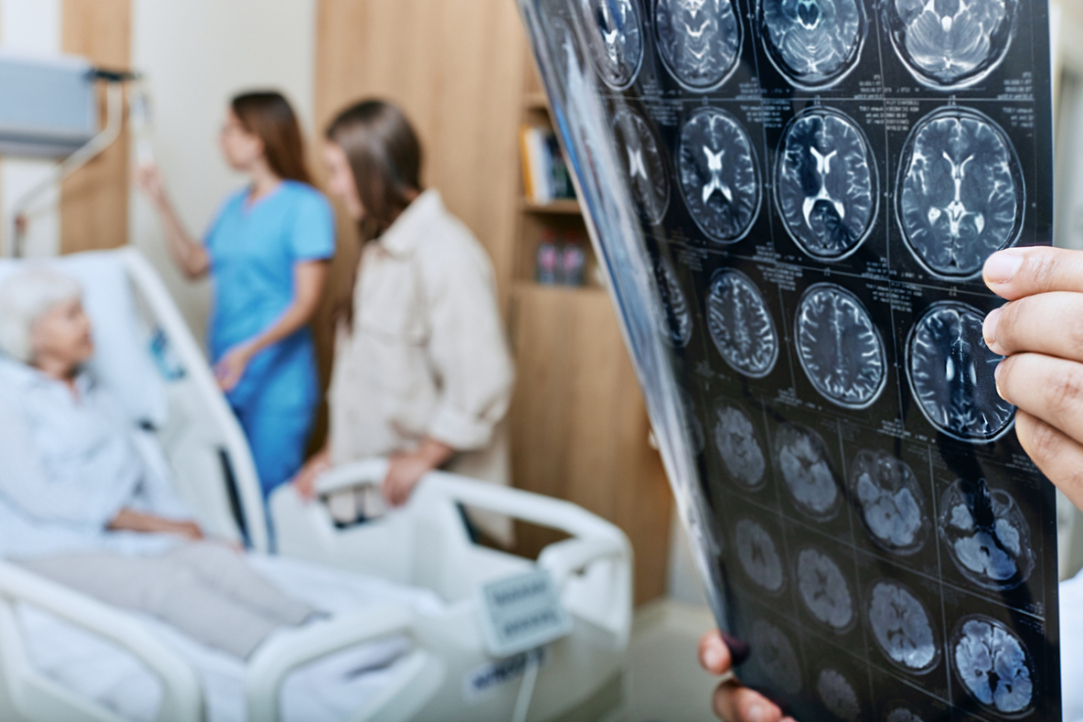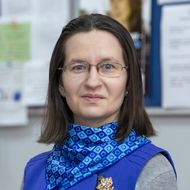Neural Network Developed at HSE Campus in Perm Will Determine Root Cause of Stroke in Patients

Specialists at HSE Campus in Perm and clinicians at Perm City Clinical Hospital No. 4, have been collaborating to develop a neural network capable of determining the root cause of a stroke. This marks the world's first attempt to create such a system, the developers note.
According to Sofya Kulikova, Senior Research Fellow at the Centre for Cognitive Neuroscience, HSE Campus in Perm, specialists at her centre have been collaborating with their colleagues at City Hospital No. 4 since 2019. During this period, they have co-authored multiple papers and hosted two workshops on employing various tools for data analysis in neurology.
They began collaborative efforts to develop a new AI tool for identifying the cause of strokes about a year ago, after winning a competition for Research and Study Groups.
Identifying the cause of a stroke is a crucial task for preventing any reoccurrences, which tend to be even more severe than primary strokes, according to Kulikova. A substantial amount of data is required for designing neural network-based tools capable of handling such a task.

'Therefore, colleagues from the clinic have been actively collecting and marking up data, while also involving their peers from other regions in the study. Simultaneously, our group has been developing and testing a tool designed to automatically identify not only the location of the lesion but also the potential underlying cause of the stroke using an MRI image.'
Data for the project is submitted by physicians from various Russian clinics, and over 1,000 images have so far been uploaded to the database. These images are used to train the neural network to identify the most probable cause of a stroke in each instance, the Perm Region Ministry of Health told TASS.
A stroke is an acute interruption of blood supply to the brain, which can be either ischemic or haemorrhagic. In an ischemic stroke, blood vessel blockage by a thrombus or atherosclerotic plaque impedes blood flow to the brain, resulting in oxygen deprivation and subsequent neuronal death. In a haemorrhagic stroke, a cerebral vessel ruptures, causing bleeding into surrounding tissues, which also results in neuronal death. Ischemic strokes are more likely to cause severe forms of disability, such as impaired speech, memory, coordination, and motor functions, while haemorrhagic strokes often result in death. Additionally, there are transient ischemic attacks, often referred to as micro-strokes. They occur when blood flow in the cerebral arteries is briefly interrupted, leading to focal brain lesions, but the symptoms typically dissipate quickly. As a result, patients often disregard the symptoms until the condition becomes critical. According to the World Health Organization (WHO), stroke ranks among the top ten leading causes of death worldwide. Furthermore, half of stroke patients experience recurrent strokes, with up to 15% experiencing them up to four times.
According to the WHO, 75% of strokes are avoidable through timely prevention measures combined with medical supervision. That is why identifying the underlying cause of the condition is so crucial. To achieve this, each patient hospitalised with an ischemic stroke undergoes a comprehensive set of studies, including CT or MRI of the brain, visualisation of cerebral vessels, ultrasound of the vessels in the neck, heart, arteries, and veins of the lower extremities, as well as electrocardiography and Holter ECG monitoring.
However, according to Professor Alexey Kulesh, Head of the Neurology Department at Clinical Hospital No. 4, in 40% of cases, these studies do not provide a clear understanding of the underlying cause of the disease. The percentage of recurrent strokes does not decrease, indicating that the underlying cause of the acute pathology has not been determined, resulting in ineffective preventative therapy being prescribed.
Until now, there hasn't been a systematic analysis, recognised by medical practitioners worldwide, correlating the shape of the lesion with the cause of stroke. This inspired the idea of creating a database of stroke lesion images and using AI to group them according to common characteristics.

Alexey Kulesh
'Certain patterns are evident, and artificial intelligence can already provide insights with a high degree of probability regarding the cause of a particular stroke. Certainly, the standard examination of a patient with an ischemic stroke will be conducted by default. However, with the assistance of a neural network, we will be able to place a diagnostic emphasis in the most probable area, enabling us to do so more efficiently. During a single hospital stay, the patient will receive treatment, rehabilitation, and recommendations for preventing recurrent strokes.'
Currently, there is an experimental version of the tool that has been tested by Kulikova and her colleagues 'on open data related to another brain disease, with very promising results.' Some of these results were presented at the Sixth International Cognitive Neuroscience Forum in Yekaterinburg. Experts are hopeful that after completing data collection and testing the tool on its own database, it will prove valuable for a wide range of medical practitioners.
See also:
AI Predicts Behaviour of Quantum Systems
Scientists from HSE University, in collaboration with researchers from the University of Southern California, have developed an algorithm that rapidly and accurately predicts the behaviour of quantum systems, from quantum computers to solar panels. This methodology enabled the simulation of processes in the MoS₂ semiconductor and revealed that the movement of charged particles is influenced not only by the number of defects but also by their location. These defects can either slow down or accelerate charge transport, leading to effects that were previously difficult to account for with standard methods. The study has been published in Proceedings of the National Academy of Sciences (PNAS).
‘Services Must Be Flexible’: How Governments Can Use Artificial Intelligence
The HSE International Laboratory for Digital Transformation in Public Administration held a roundtable titled ‘Artificial Intelligence in Public Administration: Current Trends.’ Scholars from Israel, China, and Russia discussed which public services AI can enhance and what key factors must be considered when adopting new technologies.
Artificial Intelligence Improves Risk Prediction of Complex Diseases
Neural network models developed at the HSE AI Research Centre have significantly improved the prediction of risks for obesity, type 1 diabetes, psoriasis, and other complex diseases. A joint study with Genotek Ltd showed that deep learning algorithms outperform traditional methods, particularly in cases involving complex gene interactions (epistasis). The findings have been published in Frontiers in Medicine.
Artificial Intelligence as a Catalyst for Sustainable Development
Artificial intelligence is transforming every aspect of life, expanding both our capabilities and our boundaries. At the same time, it presents new challenges for humanity, including concerns about safety, ethics, and environmental sustainability. Today, each neural network leaves a significant carbon footprint. However, with responsible management, AI has the potential to benefit the planet and become a cornerstone of a sustainable future economy. Panos Pardalos, Academic Supervisor of the Laboratory of Algorithms and Technologies for Network Analysis at the HSE Campus in Nizhny Novgorod, emphasised this point as he addressed the XXV Yasin (April) International Academic Conference on Economic and Social Development.
HSE Develops Its Own MLOps Platform
HSE researchers have developed an MLOps platform called SmartMLOps. It has been created for artificial intelligence researchers who wish to transform their invention into a fully-fledged service. In the future, the platform may host AI assistants to simplify educational processes, provide medical support, offer consultations, and solve a wide range of other tasks. Creators of AI technologies will be able to obtain a ready-to-use service within just a few hours. Utilising HSE’s supercomputer, the service can be launched in just a few clicks.
‘HSE’s Industry Ties Are Invaluable’
Pan Zhengwu has spent the last seven years at HSE University—first as a student of the Bachelor’s in Software Engineering and now in the Master’s in System and Software Engineering at the Faculty of Computer Science. In addition to his busy academic schedule, he works as a mobile software engineer at Yandex and is an avid urban photographer. In his interview with the HSE News Service, Zhengwu talks about the challenges he faced when he first moved to Russia, shares his thoughts on ‘collaborating’ with AI, and reveals one of his top spots for taking photos in Moscow.
Scientists Present New Solution to Imbalanced Learning Problem
Specialists at the HSE Faculty of Computer Science and Sber AI Lab have developed a geometric oversampling technique known as Simplicial SMOTE. Tests on various datasets have shown that it significantly improves classification performance. This technique is particularly valuable in scenarios where rare cases are crucial, such as fraud detection or the diagnosis of rare diseases. The study's results are available on ArXiv.org, an open-access archive, and will be presented at the International Conference on Knowledge Discovery and Data Mining (KDD) in summer 2025 in Toronto, Canada.
‘When You Have a Lot to Do, You Find Time for Everything’
Egor Churaev specialises in neural networks. In an interview for the HSE Young Scientists project, he talked about his program for determining the emotions and engagement of online conference participants, his trip to Brazil, and his sports hobbies.
Megascience, AI, and Supercomputers: HSE Expands Cooperation with JINR
Experts in computer technology from HSE University and the Joint Institute for Nuclear Research (JINR) discussed collaboration and joint projects at a meeting held at the Meshcheryakov Laboratory of Information Technologies (MLIT). HSE University was represented by Lev Shchur, Head of the Laboratory for Computational Physics at the HSE Tikhonov Moscow Institute of Electronics and Mathematics (HSE MIEM), as well as Denis Derkach and Fedor Ratnikov from the Laboratory of Methods for Big Data Analysis at the HSE Faculty of Computer Science.
AI vs AI: Scientists Develop Neural Networks to Detect Generated Text Insertions
A research team, including Alexander Shirnin from HSE University, has developed two models designed to detect AI-generated insertions in scientific texts. The AIpom system integrates two types of models: a decoder and an encoder. The Papilusion system is designed to detect modifications through synonyms and summarisation by neural networks, using one type of models: encoders. In the future, these models will assist in verifying the originality and credibility of scientific publications. Articles describing the Papilusion and AIpom systems have been published in the ACL Anthology Digital Archive.


